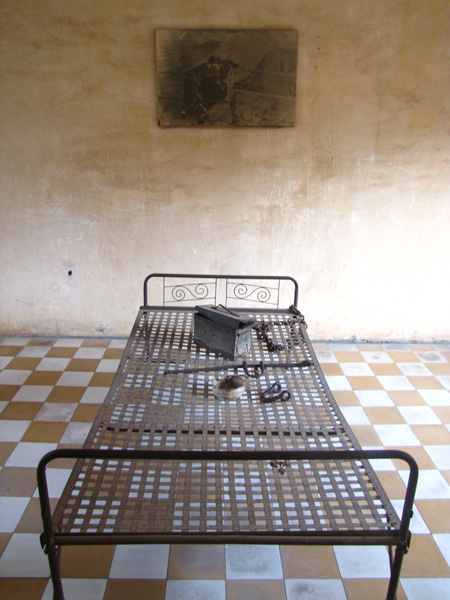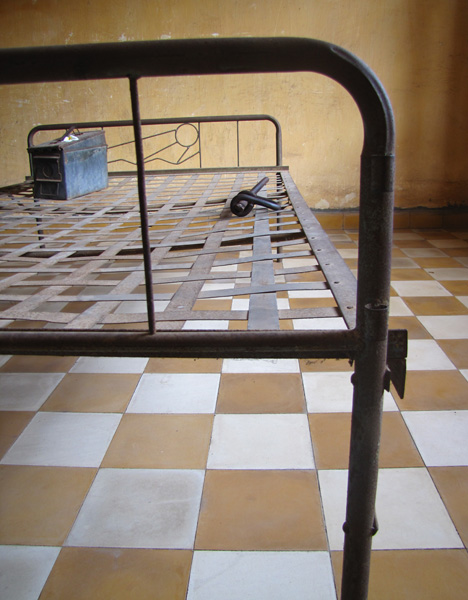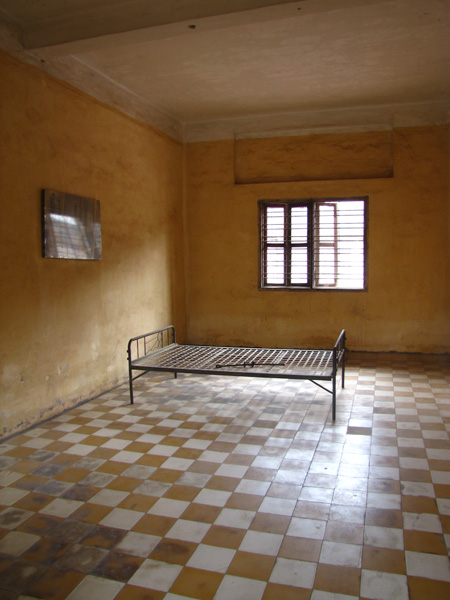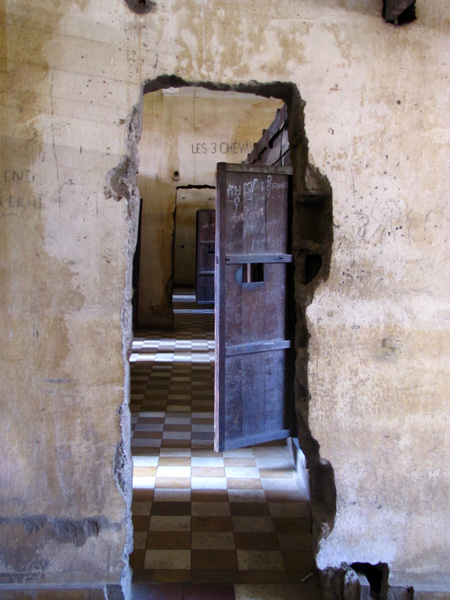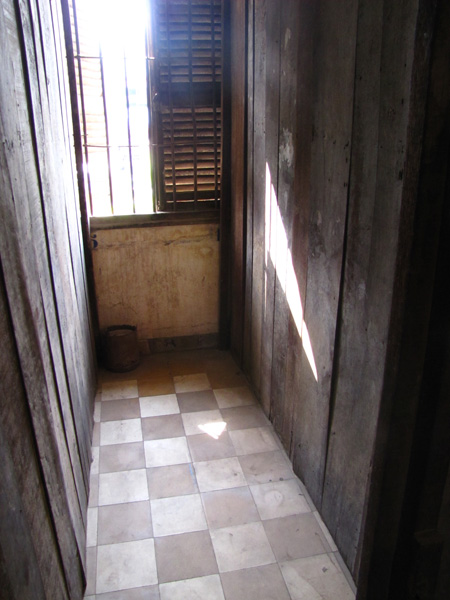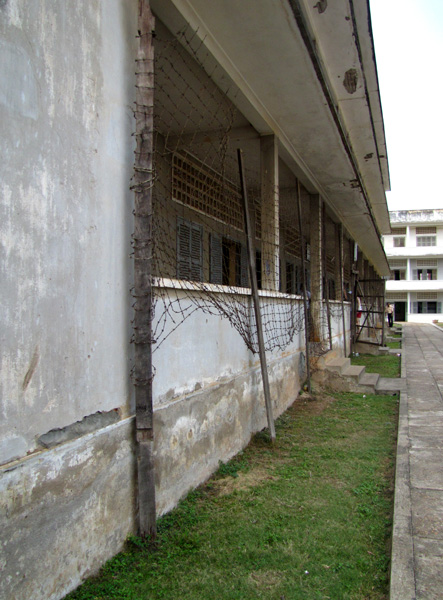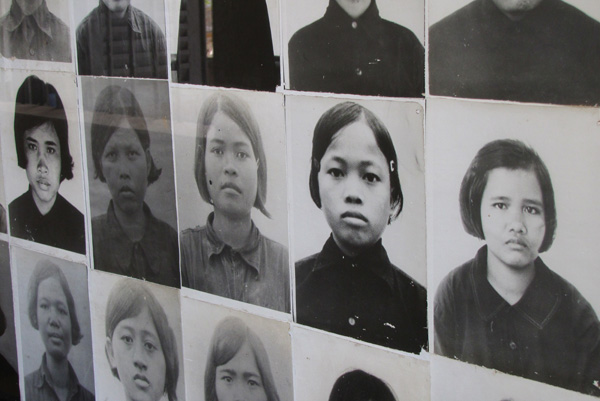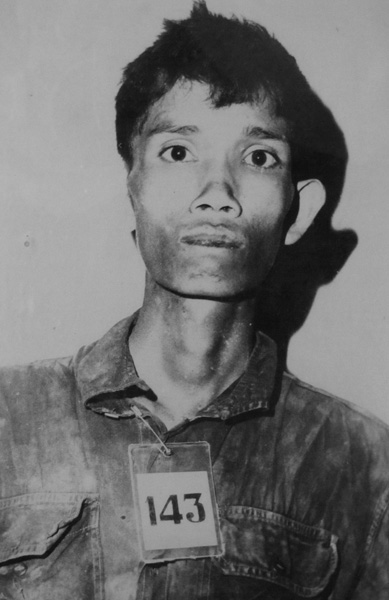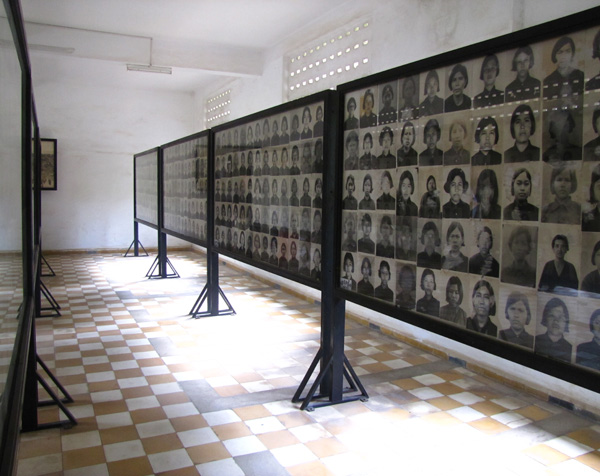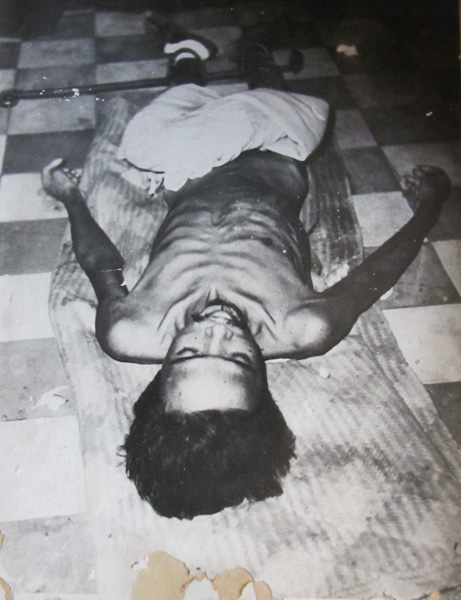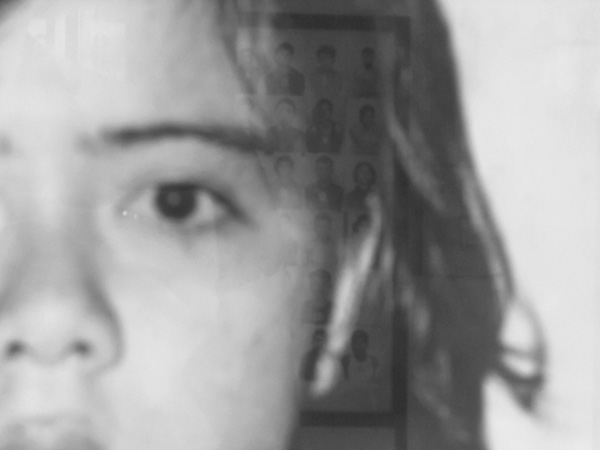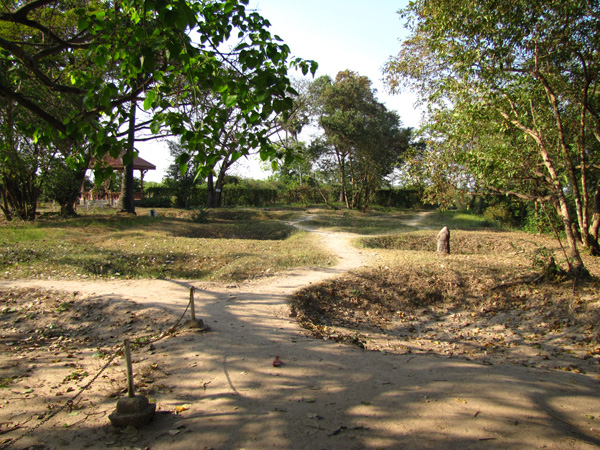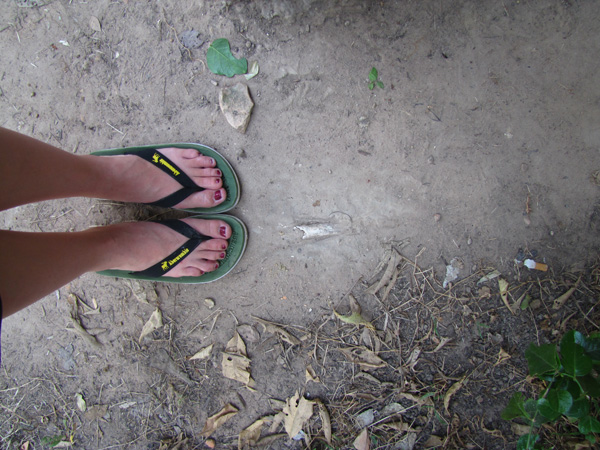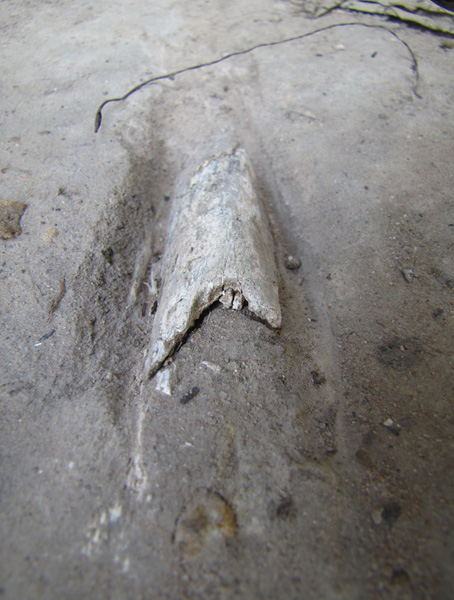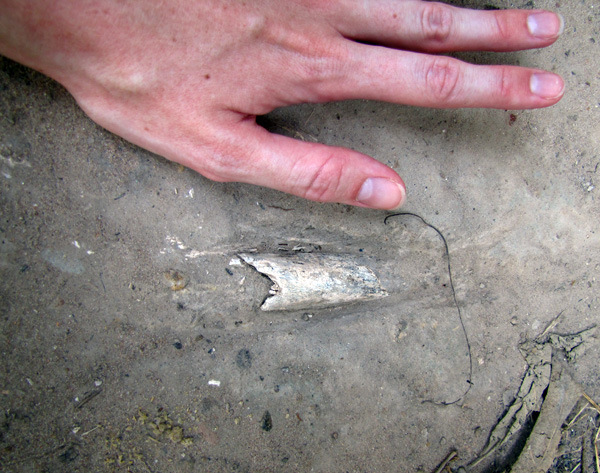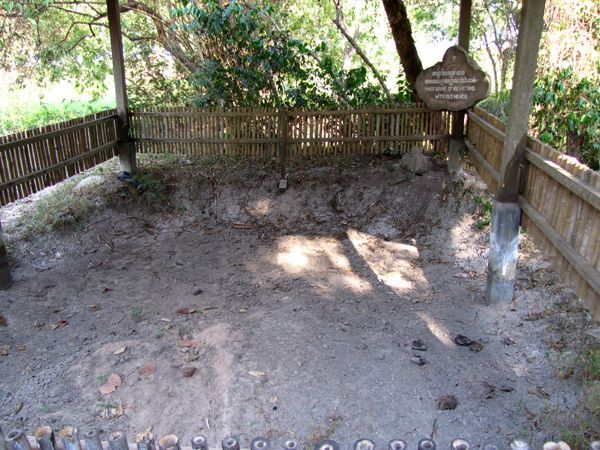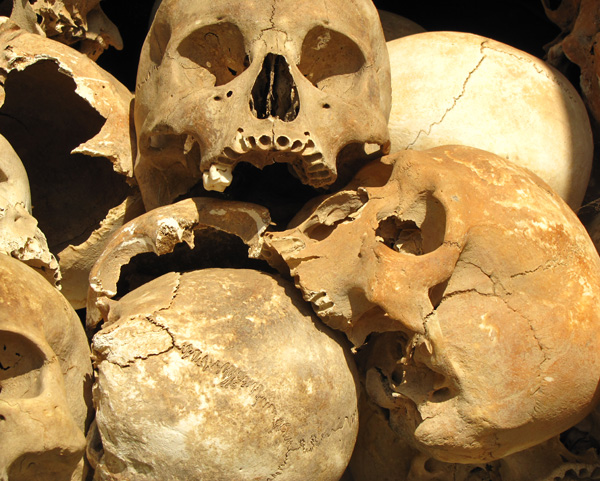The Misery Tour
Posted in Cambodia on February 14th, 2010 by Vagablonding – Be the first to commentSunday, February 14th, was Valentine’s day and the start of the Chinese New Year. On this day we went on an hour long cyclo tour of the city in the morning during which we stopped at the waterfront, a place I can’t remember the name of with a photo of the current king, and Wat Phnom, the city’s namesake. We also saw monkeys climbing along electric wires and children getting rides on an elephant in the park. The tour cost $3, plus a $1 tip, and the proceeds went to the Cyclo Center, a company that works to increase the income of the few cyclo drivers left in the city by providing them with weekly English classes and help for them and their families.
Mom and I grabbed a snack of pear and coconut ice cream ($2.80), new flipflops for me ($2.50) and vegetarian pizza ($3.40 for a small and very yummy pizza) for lunch at a nearby bakery before we met with our Intrepid group at 1:30pm for the misery tour.
I have to warn you, the following isn’t really for the faint of heart, but I think you should read on because it is important to know the dark history of this beautiful country.
First we went to the Tuol Sleng, or S-21, Genocide Museum. Tuol Sleng was once a school, but it was turned into a prison by Pol Pot’s orders in 1975. By 1978 the prison had seen 5,765 prisoners (this number doesn’t include the children of the prisoners, estimated at around 20,000), all but 21 of whom were eventually killed in the Killing Fields. Of the last 21, 14 were brutally murdered in the prison before the S-21 personnel were forced to flee, and 7 managed to hide themselves in toilets and under steps to narrowly escape death. The bodies of the 14 were left by the S-21 personnel and discovered by the liberators later in a nasty state of decomposition. They were the last people to be tortured and killed at Tuol Sleng, and they are buried in 14 graves out front to honor this.
Tuol Sleng is made up of 4 buildings: A, B, C, and D. The first floor of building A was converted into a set of small rooms with glass windows to keep the screams in. The rooms were used by the Khmer Rouge to torture and interrogate prisoners to make them confess crimes they may or may not have committed, and also give intelligence to the Pol Pot regime. The rooms had metal beds and leg shackles where the prisoners were forced to stay when not being tortured.
Sometimes the prisoners were taken outside to a pole to be tortured and interrogated. The prisoner would have his hands tied behind his back and then tied to a rope which was slung over the tall horizontal pole. The prisoner would be hoisted up by his tied hands repeatedly until he lost consciousness, then taken down and dunked head first into filthy water to shock him back awake. The torture and interrogation would start again as soon as the prisoner was conscious.
Buildings B, C, and D were used to house prisoners. Some floors had cells made of brick, some had smaller cells made of wood, and some had larger rooms where many prisoners were held together, all wearing leg shackles.
The prisoners were only allowed to “shower” once every two weeks. A shower was really just a guard coming in with a fire hose and spraying down the prisoner and his cell. The women prisoners were allowed to “shower” every 2 weeks as well, but only after being raped first. Prisoners flung themselves from the higher floors to commit suicide, but soon a fishnet pattern of barbed wire was installed on every floor to put a stop to that.
Today, the photos that were taken of the prisoners when they got to Tuol Sleng are on display inside some of the rooms.
Most of the prisoners were taken to the nearby Killing Fields where they were executed and buried in mass graves. The men were bound, blindfolded, and forced onto their knees before being beaten to death with a metal bar and pushed into the graves. Many were not dead after the beating and ended up buried alive. The women were always raped before being murdered. To kill a baby a soldier would grab her by the legs and swing her like a bat into a tree to crush her skull. Soldiers poured lyme into the graves to suppress the smell before bringing in new victims. Truckloads of victims were brought to the Killing Fields every 2 weeks to be executed.
Some of the mass graves have been excavated and the skulls of the victims put on display. But everywhere you walk in the Killing Fields you are stepping on and over pieces of bone and teeth. The rain washes the dirt away and exposes more all the time.
The sign below says “Mass grave of 166 victims without heads”:
Everyone that lives in Cambodia today has been affected by the massacre in some way. The guide that took us on the tour lost 5 siblings and his father. He was 6 years old when the terror started. Over 50% of Phnom Penh’s population of 2,000,000 is under the age of 18 because so many of the people who would be older now were murdered. More than 1,700,000 people were killed under Pol Pot, and over 1,000,000 more died of disease or went missing, bringing the total lives lost to about 3,000,000.
Now Cambodia is no longer a war torn country, but its problems are not over. Cambodia’s government is one of the most corrupt in the world, and the corruption is rampant on every level. Even children and their families must pay their teachers bribes or they will not pass their classes, no matter how smart they are. Degrees aren’t worth the paper they’re written on; money can buy any degree you want. Former leaders of the Khmer Rouge are now government officials. They make a lot of money being corrupt and you see them driving around town in brand new Lexus cars. Corruption is so deeply ingrained that there is little hope for change. Every child wants to grow up to be a policeman or a doctor because they see that this will make them rich from bribes.
Money lets you escape justice as well. For many years, some of the highest officials of the Khmer Rouge lived in total freedom, but some have recently been arrested and are now being held awaiting trial for war crimes and crimes against humanity. Even so, these criminals live better in jail than 80% of Cambodia’s population lives free. They have nice clothes, huge cells, good food, television, radios, internet, etc. 80% of Cambodia’s people have none of these things.
It is absolutely mind blowing to experience the incredible good will and happy nature of the Cambodian people after all they have been through. I have never heard of a more resilient people, and you see examples of it here daily. I am amazed.

